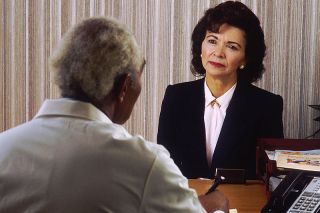Cognition
The Upside and Downside to Second Opinions
Second opinions can make primary advisors more biased.
Posted August 10, 2015

Chances are, you rely a lot on expert opinions. These opinions may be aesthetic (like movie or book reviews), functional (like product reviews), health focused or even business-focused. When you get these opinions, you are often encouraged to get a second opinion as well.
There are several reasons why second opinions are helpful. In aesthetic judgments, opinions are highly subjective, so getting a second (or even a third or a fourth) opinion can help you get different perspectives. In business and health opinions, there are a few other factors that also come into play. For one, there are differences in expertise that may affect the quality of the opinions you get. Perhaps more importantly, advisers may have conflicts of interest that affect the advice they give. Surgeons get paid for doing surgery, and so they may be tempted to recommend surgery to patients, even in borderline cases. Similarly, real estate agents may recommend that sellers ask for less money than they could potentially get for their home, because that will allow the home to sell faster, and they will have to put in less work to sell the home.
Even though getting second opinions has become a standard practice when getting advice, there has been little research on whether second opinions are helpful. This issue was explored in a fascinating paper by Sunita Suh and George Loewenstein in a 2015 paper published in Organizational Behavior and Human Decision Processes.
These researchers were interested in two questions. First, whether second opinions benefit the advisee. Second, whether advisors give better or worse recommendations when they know there will be a second opinion.
This question might seem obvious. When advisees are going to get a second opinion, it seems clear that the primary advisor should feel that they are being held to a higher standard than if they are the only one giving advice.
Yet, Suh and Loewenstein point out that when someone is serving as the sole advisor, they might feel a moral obligation to give the best possible advice. When there is a second opinion, though, advisors might feel as though their advice is more of a business decision. In that case, conflicts of interest might actually play a bigger role when advisors know that their advisees will be getting a second opinion.
Testing this proposal required a fairly involved experimental setup, so bear with me. In this task, advisees were old that there was a 30 x 30 grid of circles. Some of these circles were black and others were white. They were shown a simple 3 x 3 example. Advisees were told that they would get a $5 Amazon gift certificate if their guess about the number of black dots was within 10 of the actual number of dots. To help them achieve this goal, advisees were given the opportunity to get advice.
The primary advisors were shown the entire grid and were told the exact number of dots on the grid. However, they were also given a conflict of interest. If their advisee guessed between 1 and 99 dots more than the actual number, they would get a $5 gift certificate. If their guess was more than 100 dots above the actual number, the advisor would get a $10 gift certificate. The advisees were told that their primary advisor was biased.
The secondary advisor was only rewarded with a $5 gift certificate if the advisee got within 10 dots of the actual number. This advisor could look at the entire grid, but was not given the exact number of dots. So, to get the right answer, this advisor would have to count.
Some primary advisors were told that their advisee would be getting advice from two advisors, while others were not.
Finally, there was a final group of advisees who were only given a single advisor.
What happened?
First of all, getting a second opinion benefitted the advisee. They were much more likely to guess within 10 dots of the actual number if they had two advisors than if they had only one.
Second, primary advisors tended to be biased in the direction of their self-interest. That is, they told their advisees there were more dots in the grid than there actually were.
Third, when primary advisors knew there would be a second opinion, their advice actually got more biased. That is, knowing that their advisee would get a second opinion made them more likely to look out for their own self-interest.
Fourth, even though the advice of the primary advisor got worse, the advisee still did just about as well, because they got good advice from their unbiased second advisor.
One other study demonstrated that having a second advisor does not always make the first advisor more biased. In particular, in one study, primary advisors were told that the second advisor was unbiased and also knew the exact number of dots in the grid. They were also told that the second opinion would be easy for advisees to get. In this case, the primary advisors tended to be less biased then when the second advisor did not know exactly how many dots there were or when the advice was expensive to get.
What does all of this mean?
In many situations in life, we have two different frames that help us decide what to do. On the one hand, we bring an ethical frame to our tasks. We have to decide whether we will act kindly toward the people around us. On the other hand, we also bring an economic frame to our tasks. We have to decide whether we will maximize our own gains independent of everyone else around us. When there is a conflict of interest, these ethical and economic frames are in conflict.
Advisors shift to the economic frame when they think that someone else will do the ethical thing. Of course, even when advisors have a conflict of interest, it may still be in their economic best interests to give good advice when the secondary advisor is expert. This is particularly true when advisors are trying to create a relationship with their advisees that will allow them to continue working with them in the long-term.
Follow me on Twitter.
And on Facebook and on Google+.
Check out my new book Smart Change.
And my books Smart Thinking and Habits of Leadership
Listen to my radio show on KUT radio in Austin Two Guys on Your Head and follow 2GoYH on Twitter and on Facebook.




